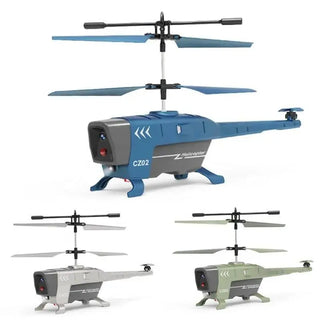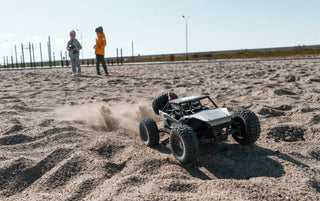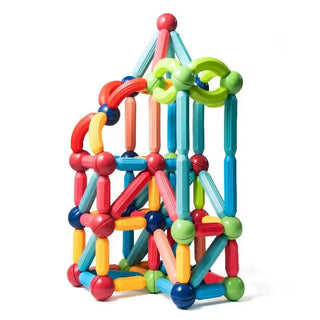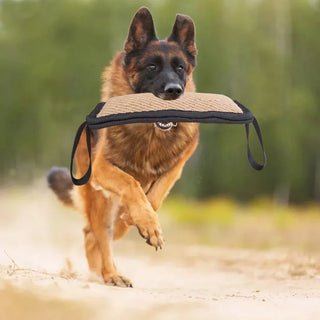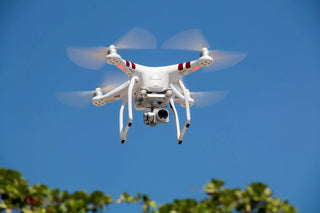The RQ-180 is one of those mysterious pieces of military tech that sparks curiosity and speculation. Developed by Northrop Grumman, this stealthy unmanned aerial vehicle (UAV) is designed for high-stakes reconnaissance missions. While much about it remains classified, its cutting-edge design and capabilities make it a key player in modern military strategy. Let’s break down what we know about this fascinating aircraft.
Key Takeaways
- The RQ-180 builds on lessons learned from earlier UAVs like the RQ-170, pushing stealth and reconnaissance capabilities further.
- Its flying wing design enhances aerodynamics and reduces radar visibility, making it ideal for covert operations.
- The UAV is equipped with advanced sensors and communication systems for intelligence gathering in challenging environments.
- It plays a strategic role in electronic warfare and monitoring high-risk areas, often working alongside other UAVs.
- Despite its advancements, the RQ-180 faces challenges like ethical debates around autonomy and international scrutiny.
The Origins and Development of the RQ 180

Lockheed Martin's Role in UAV Innovation
Lockheed Martin has long been a trailblazer in the world of unmanned aerial vehicles (UAVs). With projects like the RQ-170 Sentinel, the company showcased its ability to push the boundaries of stealth and surveillance technology. The RQ-170, often dubbed the "Beast of Kandahar," laid the groundwork for what would eventually evolve into the RQ-180. Its success in high-stakes missions demonstrated the potential of advanced UAVs, paving the way for Northrop Grumman to take the concept even further.
Design Evolution from the RQ-170
The RQ-180 didn’t emerge out of thin air; it’s deeply rooted in the design philosophy of the RQ-170. While the RQ-170 featured a flying wing configuration and basic stealth capabilities, the RQ-180 took these ideas to the next level. Improved aerodynamics, enhanced radar evasion, and a more robust payload capacity were all key upgrades. The transition from the RQ-170 to the RQ-180 was not just about making things bigger or better—it was about addressing the limitations of its predecessor while meeting new operational demands.
| Feature | RQ-170 Sentinel | RQ-180 |
|---|---|---|
| Wingspan | ~66 feet | Estimated larger, ~130 feet |
| Stealth Capability | Basic | Advanced |
| Payload Options | Limited | Modular and diverse |
The Strategic Need for Stealth UAVs
In an era where airspace is increasingly contested, stealth UAVs like the RQ-180 are more than just a luxury—they’re a necessity. Traditional reconnaissance aircraft face growing challenges from advanced radar systems and anti-aircraft defenses. The RQ-180’s ability to operate undetected in hostile environments fills a critical gap. Whether it’s gathering intelligence deep within enemy territory or supporting electronic warfare operations, this UAV represents a strategic leap forward for modern militaries.
The RQ-180 symbolizes a shift in military strategy, where unmanned systems are no longer just tools—they’re game-changers. By combining stealth, endurance, and cutting-edge technology, it has redefined what UAVs can achieve in the 21st century.
Design Features of the RQ 180
Flying Wing Configuration and Aerodynamics
The RQ 180 adopts a sleek flying wing design, which is not only visually striking but also highly efficient. This design minimizes drag, allowing for extended flight times and improved fuel efficiency. The absence of a traditional fuselage and tail structure reduces radar cross-section, a key feature for stealth operations.
Key benefits of the flying wing design include:
- Enhanced lift-to-drag ratio for longer endurance.
- Simplified structural design, reducing weight.
- Better stability at high altitudes, making it ideal for reconnaissance missions.
Stealth Capabilities and Radar Evasion
Stealth is the cornerstone of the RQ 180's operational edge. Its radar-absorbing materials and unique shape work in tandem to scatter and absorb radar signals, making it nearly invisible to enemy detection systems. The UAV's exhaust system is cleverly designed to minimize heat signatures, further enhancing its stealth profile.
Features contributing to its stealth:
- Radar-absorbing coatings.
- Low observable exhaust systems.
- Smooth, uninterrupted surfaces to deflect radar waves.
The RQ 180's stealth capabilities allow it to operate in highly contested airspaces where traditional aircraft would be easily detected.
Advanced Sensor and Payload Systems
The RQ 180 is equipped with cutting-edge sensors that enable it to gather a wide range of intelligence data. These include hyperspectral imaging systems, advanced radar for ground mapping, and even communication intercept tools. Modular payload bays allow the UAV to adapt to different mission requirements, whether it's surveillance, electronic warfare, or signal intelligence.
Example payload capabilities:
| Sensor Type | Function |
|---|---|
| Hyperspectral Imaging | Detects chemical and material signatures |
| AESA Radar | Provides detailed ground mapping |
| Communication Intercept | Captures and analyzes enemy transmissions |
The RQ 180's design is a blend of innovation and functionality, ensuring it remains a vital asset in modern military operations.
Operational History of the RQ 180

Deployment in High-Stakes Missions
The RQ 180 has been a game-changer in modern warfare, particularly in missions where stealth and precision are paramount. Its ability to operate undetected in contested airspaces has made it a critical asset for the U.S. Air Force. The UAV has reportedly been deployed in regions with heightened tensions, where it conducts surveillance and gathers intelligence without alerting adversaries. In some operations, it has worked alongside manned aircraft, providing real-time data to enhance mission outcomes.
Role in Intelligence and Reconnaissance
One of the RQ 180's primary roles is intelligence gathering. Equipped with advanced sensors, it can monitor enemy activity, intercept communications, and even detect chemical or radioactive materials. This makes it invaluable for preemptive measures and strategic planning. For example, during reconnaissance missions, the UAV can relay detailed imagery and data back to command centers, ensuring that decision-makers have a clear picture of the battlefield.
Notable Sightings and Confirmations
While much about the RQ 180 remains classified, there have been a few confirmed sightings that hint at its capabilities. Aviation enthusiasts and experts have spotted it in areas like the Pacific and the Middle East, often near U.S. military installations. These sightings have fueled speculation about its role in monitoring global hotspots. Additionally, its presence in joint exercises with allied forces underscores its importance in collaborative defense strategies.
The RQ 180’s operational history reflects a shift towards unmanned systems that prioritize stealth, adaptability, and advanced technology. As nations continue to invest in UAVs, the RQ 180 stands out as a testament to innovation in military aviation.
- Advanced stealth capabilities allow it to evade sophisticated radar systems.
- High-altitude performance ensures it can operate above most air defenses.
- Modular design supports a variety of mission-specific payloads.
For those interested in aviation technology, the Hoshi JJRC JX02 Flying RC Helicopter offers a glimpse into the excitement of flight, albeit on a smaller scale. Its user-friendly design and stable performance make it perfect for enthusiasts of all ages.
Technological Advancements in the RQ 180

Integration of Hyperspectral Sensors
The RQ 180 is equipped with hyperspectral sensors capable of detecting materials and substances invisible to standard optical systems. These sensors are particularly useful for identifying chemical compositions, monitoring environmental changes, and even detecting nuclear materials. This capability pushes the boundaries of what UAVs can achieve in reconnaissance and intelligence gathering.
- Detects minute traces of radioactive isotopes.
- Identifies chemicals indicative of weapons manufacturing.
- Enhances mission precision with detailed spectral data.
Communication and Data Link Innovations
The UAV employs cutting-edge secure communication systems designed to relay real-time data across vast distances. This ensures seamless operation even in contested environments where electronic warfare is a concern. The data links are likely encrypted and resist jamming, making the RQ 180 a reliable asset in modern warfare.
Key Features:
- Encrypted communication for secure data transfer.
- Anti-jamming capabilities to maintain operational integrity.
- Real-time data sharing with command centers and allied units.
Engine and Powerplant Specifications
The RQ 180’s engine is designed for efficiency and stealth. While specific details remain classified, analysts suggest it uses a low-noise, high-efficiency turbofan engine, possibly an evolution of the General Electric TF34. This enables it to operate at high altitudes for extended periods.
| Feature | Specification |
|---|---|
| Estimated Wingspan | 130 feet |
| Service Ceiling | 60,000 feet (approx.) |
| Engine Type | Low-noise turbofan |
The powerplant’s design reflects a balance between performance and stealth, ensuring the UAV remains undetectable while meeting mission objectives.
The RQ 180 in Modern Military Strategy

Applications in Electronic Warfare
The RQ 180 plays a pivotal role in modern electronic warfare. Its advanced systems are capable of jamming enemy radar and communications, making it a critical asset in disrupting adversarial operations. By leveraging its stealth capabilities, the UAV can operate deep within hostile territories without detection. This makes it ideal for neutralizing sophisticated air defense systems. Additionally, the RQ 180 can gather electronic intelligence, providing valuable data on enemy frequencies and signal types.
Surveillance of High-Risk Regions
One of the RQ 180's primary missions is surveillance in regions where manned aircraft would face significant risks. Its ability to fly at high altitudes and remain undetected allows it to monitor activities in contested zones. The UAV's sensors can detect movements, track targets, and even identify potential threats from a safe distance. This capability ensures that commanders receive real-time intelligence without putting human lives in jeopardy.
Collaboration with Other UAV Systems
The RQ 180 is designed to work in tandem with other UAVs and manned aircraft. For example, it can act as a "quarterback," coordinating the actions of smaller drones in a swarm. It also shares data with reconnaissance planes and ground units, creating a comprehensive battlefield picture. This collaborative approach enhances mission success rates and ensures efficient use of resources.
The RQ 180 represents a shift in military strategy, emphasizing stealth, adaptability, and teamwork in complex operational environments.
| Feature | Advantage |
|---|---|
| Stealth Technology | Operates undetected in hostile territories |
| High-Altitude Flight | Monitors regions beyond enemy reach |
| Advanced Sensors | Provides detailed intelligence and surveillance |
Challenges and Controversies Surrounding the RQ 180
Incidents of UAV Loss and Recovery
The RQ 180’s cutting-edge technology makes it a valuable asset, but it also increases the stakes when one is lost. Losing such a sophisticated drone can lead to sensitive technology falling into the wrong hands. While details are scarce, there are rumors of near-misses and even a few crashes during testing. Recovery operations for these drones are often delicate, requiring careful coordination to avoid exposing classified tech. It’s a high-risk game where every incident could have major consequences.
Ethical Concerns in Autonomous Operations
Autonomous drones like the RQ 180 raise questions about accountability. Who’s responsible if an autonomous system makes a critical error? Critics argue that relying too much on AI in military operations could lead to unintended consequences, especially in complex environments. The debate often circles back to the balance between human oversight and machine autonomy. Some worry that the increasing use of such systems could blur ethical lines in warfare.
International Reactions and Speculations
The RQ 180 has sparked plenty of international chatter. Some nations see it as a threat, while others are scrambling to develop their own stealth UAVs to compete. Speculation about its capabilities has fueled both admiration and concern globally. This drone’s mere existence has shifted the focus of military strategies worldwide, with allies and adversaries alike trying to understand its full potential.
Comparing the RQ 180 to Other UAVs
Differences from the RQ-170 Sentinel
The RQ-180 builds on the foundation laid by the RQ-170 Sentinel, but it takes stealth and operational range to a whole new level. While the RQ-170 was designed primarily for mid-altitude reconnaissance missions, the RQ-180 is optimized for high-altitude, long-endurance operations. Its stealth capabilities are significantly more advanced, making it harder to detect by modern radar systems. Additionally, the RQ-180 features enhanced sensor suites and a larger payload capacity, allowing it to handle more complex missions.
| Feature | RQ-170 Sentinel | RQ-180 |
|---|---|---|
| Altitude Capability | Mid-altitude (approx. 50,000 ft) | High-altitude (classified, likely >60,000 ft) |
| Stealth Design | Basic stealth | Advanced stealth |
| Payload Capacity | Limited | Larger and modular |
| Operational Range | Moderate | Extended |
| Sensor Technology | Electro-optical/infrared | Hyperspectral and advanced radar |
Advantages Over Traditional Reconnaissance Aircraft
The RQ-180 offers a host of advantages over traditional manned reconnaissance aircraft. For one, it eliminates the risk to human pilots, as it operates autonomously or via remote control. It also boasts superior endurance, capable of staying airborne for extended periods without the need for refueling. This makes it ideal for missions in remote or contested areas where manned aircraft might face significant risks. Additionally, its stealth design allows it to penetrate heavily defended airspace, something traditional reconnaissance planes often struggle with.
Advantages include:
- No risk to human life.
- Extended flight endurance.
- Ability to operate in high-risk or contested areas.
- Superior stealth capabilities.
- Reduced operational costs compared to manned aircraft.
Global Competitors in Stealth UAV Technology
The RQ-180 isn’t alone in the race for stealth UAV supremacy. Other nations have developed or are developing their own advanced UAVs. For instance, China’s Hongdu GJ-11 and Russia’s Sukhoi Okhotnik are notable competitors. These platforms also feature stealthy flying wing designs and are tailored for reconnaissance and combat missions. However, the RQ-180’s integration of cutting-edge technology, such as hyperspectral sensors and advanced communication links, arguably gives it an edge in capability and versatility.
| UAV Model | Country of Origin | Key Features |
|---|---|---|
| Hongdu GJ-11 | China | Stealth design, combat capabilities |
| Sukhoi Okhotnik | Russia | Flying wing, high payload capacity |
| Northrop Grumman RQ-180 | USA | Advanced stealth, long endurance |
The RQ-180 stands as a testament to the rapid advancements in UAV technology, pushing the boundaries of what unmanned systems can achieve in modern warfare.
When we look at the RQ 180 and compare it to other drones, we see some interesting differences. The RQ 180 stands out with its unique features and capabilities. While many drones are good for specific tasks, the RQ 180 offers a blend of performance and versatility that makes it special. If you want to learn more about how the RQ 180 stacks up against other UAVs, visit our website for detailed insights and comparisons!
Wrapping Up the RQ-180
The RQ-180 remains a fascinating piece of technology, shrouded in secrecy and speculation. While we may not know all the details about its capabilities or missions, it's clear that this stealth UAV represents a significant leap in unmanned aerial technology. Its design and purpose hint at a future where drones play an even bigger role in military operations. For now, the RQ-180 continues to capture the imagination of aviation enthusiasts and defense analysts alike, leaving us all wondering what other advancements are waiting just beyond the horizon.
Frequently Asked Questions
What is the RQ-180 UAV?
The RQ-180 is a stealth unmanned aerial vehicle (UAV) developed by Northrop Grumman. It is designed for intelligence, surveillance, and reconnaissance missions, featuring advanced stealth and sensor technology.
How does the RQ-180 differ from the RQ-170?
While both are stealth UAVs, the RQ-180 is a more advanced platform with greater range, improved stealth, and updated sensor systems compared to the RQ-170 Sentinel.
What missions is the RQ-180 used for?
The RQ-180 is primarily used for high-stakes intelligence and reconnaissance missions, often in contested airspaces where stealth capabilities are essential.
What makes the RQ-180 stealthy?
The RQ-180 uses a flying wing design, radar-absorbing materials, and advanced technologies to reduce its radar signature, making it hard to detect.
Is the RQ-180 autonomous?
The RQ-180 can operate with a high degree of autonomy, but it is typically controlled by human operators who oversee its missions and make critical decisions.
Why is the RQ-180 important for modern military strategy?
The RQ-180 plays a key role in modern military strategy by providing real-time intelligence, monitoring high-risk regions, and supporting electronic warfare operations.

